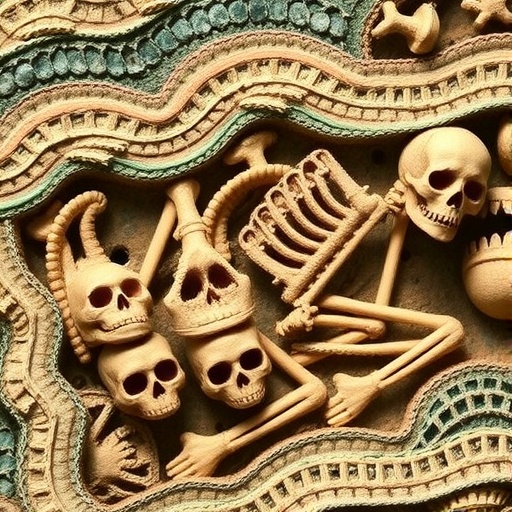Between the years 1381 and 1391, a cataclysmic seismic event registering above magnitude 8.0 shook the northeastern Caribbean region, unleashing a tsunami so powerful that it deposited immense coral boulders far inland on Anegada, the northernmost of the British Virgin Islands. This monumental natural disaster, previously shrouded in the mists of history, has now been precisely dated through the pioneering analyses of coral skeletons by a University of Washington-led research team. The study, recently published in Geophysical Research Letters, not only identifies the temporal window for this medieval tsunami but also sheds new light on the seismic hazards posed by the Puerto Rico Trench area—a tectonically complex zone where the Caribbean and North American plates converge.
Unlike many Caribbean islands shielded by broad, shallow continental shelves that dissipate the energy of incoming waves, Anegada’s unique underwater topography funnels oceanic energy directly onto its shores. The steep slope descending into the Puerto Rico Trench amplifies the tsunami hazard dramatically, a distinction crucial for understanding both historical and future regional risks. The tsunami event scattered coral fragments and other debris across extensive reaches of the island, serving as a geological archive of this violent episode. Critically, the coral skeletons’ death traces mark the abrupt environmental transformation induced by the tsunami floodwaters.
Traditional historical records from the northeastern Caribbean span only about five centuries and contain no mention of a tsunami linked to a major earthquake in the Puerto Rico Trench. This absence hampered efforts to assess seismic risks accurately based solely on documented human history. Geologic investigations, however, established an opportunity to peer far beyond the limitations of written chronicles, allowing researchers to reconstruct seismic and tsunami histories over millennia.
Initiated in the wake of the devastating 2004 Indian Ocean earthquake and tsunami—which resulted in over 250,000 fatalities—the research program intensified scrutiny of potential tsunami risks across global coastlines, including those along the Atlantic seaboard. U.S. officials mandated a reevaluation of coastal hazards, prompting seismologists and geologists to investigate analogous risks in regions previously considered low-threat. Uri ten Brink, project lead and esteemed geophysicist at the Woods Hole Coastal and Marine Science Center, engaged Brian Atwater—an expert with extensive field experience including studies in tsunami-ravaged Indonesia—to examine coral deposits on Anegada for tsunami evidence.
Over successive expeditions, the research revealed a complex geological narrative, with multiple inter-disciplinary teams converging to decode the environmental history encapsulated in coral boulders. In the latest investigation spearheaded by Hali Kilbourne, an associate research professor at the University of Maryland Center for Environmental Science, the focus centered on dating the coral using uranium-series isotopic techniques. This method measures uranium and thorium isotopes in coral skeletons, which decay at known and constant rates, thus enabling precise age determinations.
To ensure accuracy, researchers sampled coral interiors where weathering and contamination effects are minimized. They then counted the annual density bands—akin to the growth rings in trees—between the dated interior section and the coral exterior, calculating the precise year when the coral ceased growth, corresponding to its death caused by tsunami inundation. This innovative approach refined the tsunami’s date range to the final decade of the 14th century, a breakthrough that bridges geochronology, paleoseismology, and tsunami science.
Beyond chronology, coral skeletons offer valuable paleoclimatic insights. Their chemical composition reflects historical water temperatures and salinity levels, enabling scientists like Kilbourne to extend our climate records back centuries, potentially enhancing understanding of long-term climate variability in the Caribbean basin. This multidimensional approach to coral analysis thus enriches both seismic hazard assessment and climate science.
Understanding the 14th-century tsunami’s dynamics is critical for modern disaster preparedness. Anegada’s steep bathymetric profile and proximity to the Puerto Rico Trench mean that the island—and nearby coastal regions—remain vulnerable to similar megathrust earthquakes and tsunamis. With ongoing initiatives like the 2025 Caribe Wave exercise aimed at improving Caribbean and adjacent regions’ tsunami readiness, this new geological insight provides tangible evidence of hazards that demand incorporation into urban planning and infrastructural development.
Brian Atwater emphasizes the tangible implications of this research: “Engineers and planners require comprehensive seismic hazard data to construct critical infrastructure, such as schools and hospitals, capable of withstanding potential future earthquakes or tsunamis.” The historic event’s recognition elevates the necessity for stringent building codes and emergency preparedness strategies tailored to these newly confirmed risks.
This landmark study represents a collaborative endeavor across multiple institutions and disciplines, reflecting the cutting edge of Earth science research. Contributors hail from the Paris Institute of Earth Physics, Aix-Marseille University, University of Delaware, National Taiwan University, Colorado Mesa University, and the United States Geological Survey, underscoring the global scope of efforts to understand and mitigate natural hazards.
Funded by prestigious agencies including the U.S. National Science Foundation, French National Research Agency, and the Taiwan Ministry of Education, this research exemplifies the international community’s commitment to decoding Earth’s seismic past. Such investigations are pivotal in equipping societies with the knowledge necessary to confront future natural disasters, protecting lives and infrastructure across the vulnerable Caribbean region.
Subject of Research:
Dating of a medieval tsunami event in the Caribbean using uranium-series techniques applied to coral skeletons.
Article Title:
Dating a Medieval Tsunami With Uranium-Series Techniques on Caribbean Corals
News Publication Date:
8 October 2025
Web References:
http://dx.doi.org/10.1029/2024GL114448
Image Credits:
Brian Atwater/United States Geological Survey
Keywords:
Geology, Tsunamis, Earth sciences, Geochemistry, Plate tectonics, Earthquakes, Natural disasters, Floods, Radiocarbon




